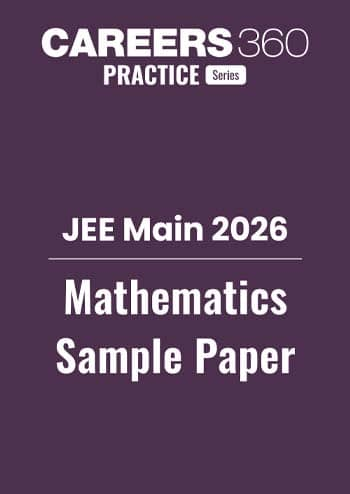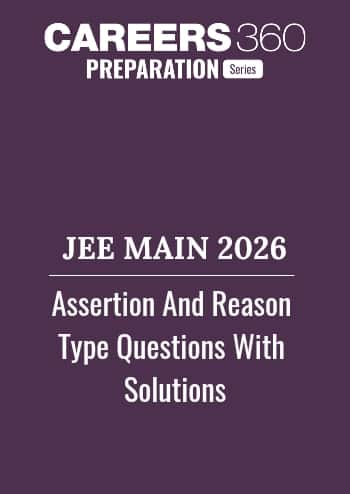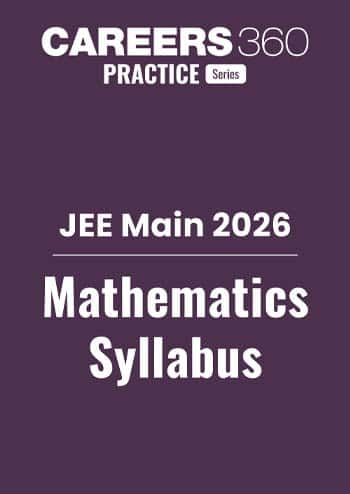Application of AM-GM Inequality - Practice Questions & MCQ
Quick Facts
-
28 Questions around this concept.
Solve by difficulty
If $x \geq y, y>1$, Then $\log _x \frac{x}{y}+\log _y \frac{y}{x}$ can never be
The number of real solution of the equation $Sin \left ( e^{x} \right )=5^{x}+5^{-x}\, \, \, is$
The number of real solution of $\sin e^{x}.\cos e^{x}=2^{x-2}+2^{-x-2}$ is
JEE Main 2026: Official Website | Top 30 Most Repeated Questions
JEE Main Sample Papers: Physics | Chemistry | Maths
JEE Main QP & Mock: Previous 10 Year Questions | Chapter Wise PYQs | Mock test Series
JEE Main Most Scoring Concept: January 2025 Session | April 2025 Session | Overall
The minimum value of $4^{\mathrm{x}}+4^{1-\mathrm{x}}, x \in R$ is
If three positive numbers a, b, and c are in A.P. such that abc=8, then the minimum possible value of b is :
Concepts Covered - 3
Application of AM-GM
If $a_1, a_2, a_3, \ldots \ldots ., a_n$ are n positive variables and k is a constant
If $a_1+a_2+a_3+\ldots \ldots .+a_n=k$ (constant), then the greatest value of $a_1 \cdot a_2 \cdot a_3$. $\qquad$ $\cdot a_n$ is $(\mathrm{k})^{\mathrm{n}}$ and this is possible when $a_1=a_2=a_3=\ldots .=a_n$.
$\qquad$
Proof:
$$
\begin{aligned}
& \text { as, } \mathrm{AM} \geq \mathrm{GM} \\
& \therefore \frac{\mathrm{a}_1+\mathrm{a}_2+\mathrm{a}_3+\ldots \ldots+\mathrm{a}_{\mathrm{n}}}{\mathrm{n}} \geq\left(\mathrm{a}_1 \cdot \mathrm{a}_2 \cdot \mathrm{a}_3 \cdot \ldots \ldots \cdot \mathrm{a}_{\mathrm{n}}\right)^{\frac{1}{\mathrm{n}}} \\
& \Rightarrow \quad \frac{\mathrm{k}}{\mathrm{n}} \geq\left(\mathrm{a}_1 \cdot \mathrm{a}_2 \cdot \mathrm{a}_3 \cdot \ldots \ldots \cdot \mathrm{a}_{\mathrm{n}}\right)^{\frac{1}{n}} \\
& \text { or }\left(\mathrm{a}_1 \cdot \mathrm{a}_2 \cdot \mathrm{a}_3 \cdot \ldots \ldots \cdot \mathrm{a}_{\mathrm{n}}\right) \leq\left(\frac{\mathrm{k}}{\mathrm{n}}\right)^{\mathrm{n}}
\end{aligned}
$$
Application of AM-GM
$a_1, a_2, a_3, \ldots \ldots ., a_n$ are n positive variables and k is a constant
If $\mathrm{a}_1 \cdot \mathrm{a}_2 \cdot \mathrm{a}_3 \cdot \ldots \ldots \cdot \mathrm{a}_{\mathrm{n}}=\mathrm{k}$, where k is constant, then the value of $\mathrm{a}_1+\mathrm{a}_2+\mathrm{a}_3+\ldots \ldots+\mathrm{a}_{\mathrm{n}}$ is minimum when all the terms are equal to each other, i.e. $\mathrm{a}_1=\mathrm{a}_2=\mathrm{a}_3=\ldots \ldots=\mathrm{a}_{\mathrm{n}}$.
So that the least value of $a_1+a_2+a_3+\ldots \ldots+a_n$ is $n(k)^{1 / n}$.
Proof:
To prove this we will be using the fact that A.M. $\geq$ G.M
So,
$
\begin{aligned}
& \frac{a_1+a_2+a_3+\ldots \ldots+a_n}{n} \geq\left(a_1 \cdot a_2 \cdot a_3 \cdot \ldots \ldots \cdot a_n\right)^{1 / n}=k^{1 / n} \\
\Rightarrow & \frac{a_1+a_2+a_3+\ldots \ldots+a_n}{n} \geq k^{1 / n} \\
\Rightarrow & a_1+a_2+a_3+\ldots \ldots+a_n \geq n \cdot k^{1 / n}
\end{aligned}
$
Here, $a_1=a_2=a_3=\ldots \ldots=a_n$
$\therefore$ least value of $a_1+a_2+a_3+\ldots \ldots+a_n$ is $n \cdot k^{1 / n}$
Application of A.M., G.M., and H.M.
Let $\mathrm{A}, \mathrm{G}$ and H are arithmetic, geometric and harmonic means of two positive real numbers a and b.
Then,
$
\mathrm{A}=\frac{a+b}{2}, \mathrm{G}=\sqrt{a \cdot b} \text { and } \mathrm{H}=\frac{2 a b}{a+b}
$
1. $A \geq G \geq H$
$
\begin{aligned}
& \mathrm{A}-\mathrm{G}=\frac{a+b}{2}-\sqrt{a b}=\frac{(\sqrt{a}-\sqrt{b})^2}{2} \geq 0 \\
& \Rightarrow \mathrm{~A}-\mathrm{G} \geq 0 \\
& \Rightarrow \mathrm{~A} \geq \mathrm{G}
\end{aligned}
$
Note that $\mathrm{A}=\mathrm{G}$ when $\mathrm{a}=\mathrm{b}$
Now,
$
\begin{aligned}
& \mathrm{G}-\mathrm{H}=\sqrt{a b}-\frac{2 a b}{a+b} \\
&=\sqrt{a b}\left(\frac{a+b-2 \sqrt{a b}}{a+b}\right) \\
&=\frac{\sqrt{a b}}{a+b}(\sqrt{a}-\sqrt{b})^2 \geq 0 \\
& \Rightarrow \mathrm{G} \geq \mathrm{H}
\end{aligned}
$
Again $\mathrm{G}=\mathrm{H}$ when $\mathrm{a}=\mathrm{b}$
From (i) and (ii) we get
$
\mathrm{A} \geq \mathrm{G} \geq \mathrm{H}
$
Note:
- when $\mathbf{a}=\mathrm{b}$ then only, $\mathrm{A}=\mathrm{G}=\mathrm{H}$ If $a_1, a_2, a_3, \ldots ., a_n$ are n positive real numbers, then
$
\begin{aligned}
& \mathrm{A}=\text { A.M. of } a_1, a_2, a_3, \ldots ., a_n=\frac{a_1+a_2+a_3+\ldots .+a_n}{n} \\
& \mathrm{G}=\text { G.M. of } a_1, a_2, a_3, \ldots ., a_n=\left(a_1 \cdot a_2 \cdot a_3 \ldots \ldots . a_n\right)^{\frac{1}{n}}
\end{aligned}
$
$
\mathrm{H}=\mathrm{H} . \mathrm{M} . \text { of } a_1, a_2, a_3, \ldots \ldots, a_n=\frac{n}{\frac{1}{a_1}+\frac{1}{a_2}+\ldots \ldots+\frac{1}{a_n}}
$
In such case also $A \geq G \geq H$
And $\mathrm{A}=\mathrm{G}=\mathrm{H}$, when $a_1=a_2=a_3=\ldots \ldots .=a_n$
2. $A, G$ and $H$ of 2 positive real numbers form a geometric progression, i.e. $G^2=A H$. we have,
$
\begin{aligned}
\mathrm{A} \cdot \mathrm{H} & =\frac{a+b}{\mathcal{2}} \times \frac{2 a b}{a+b} \\
& =a b=(\sqrt{a b})^2=\mathrm{G}^2
\end{aligned}
$
Hence, $\quad \mathrm{G}^2=\mathrm{AH}$
Study it with Videos
"Stay in the loop. Receive exam news, study resources, and expert advice!"















